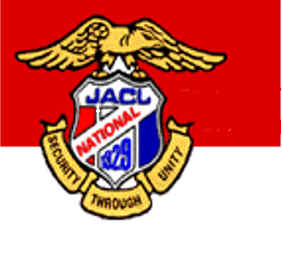
| Japanese American Citizen League |

| The Japanese American population formed an organization that attempted to secure the political and social interests of its members. The organization forged a political niche for Japanese Americans and represented a loose alliance that bound Japanese Americans primarily along the West coast. The Issei initiated the organization as political arm for their community through the Nisei who had full rights of American citizens. |
When hostilities erupted between Japan and the United States, it was one of the few organizations that people could turn to for leadership when the older community leaders were arrested for association with Japanese culture and beliefs. The American government removed these individuals because it was feared they might pose a threat and initiate resistance to Executive Order 9066. The JACL was a combination of a loose network of Japanese American citizen groups in 1930. However they did not represent the interests of the entire community.
|

1929, the New American Citizens League, founded by Saburo Kido, sponsored a meeting to organize a federation of Nisei groups, which would become the JACL. Hosowaka, pg 109. |
| The group was decidedly patriot and assimilationist, going to great lengths to prove Japanese American loyalty to a nation whose government was imprisoning its own people. However, what some viewed as a demonstration of good citizenship and loyalty, others viewed as duplicity with an ignorant and racist government and betrayal to the Japanese American community. |
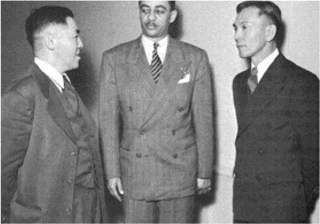
Hosokawa, Nisei, pg442 The JACL Saburo Kido (L) with friends
|
According to Peter Irons' account of Japanese American internment, entitled ‘Justice At war’, the exclusivity of the organization generated resentment and suspicion among members of the community. Irons asserts “the JACL’s limitation of membership to American citizens, and its requirement that members sign a profession of loyalty to the United States, drove an additional wedge between the younger and older generations.” ( Irons 77) |
| Mke Masaoka had the unfortunate luck to inherit the JACL leadership just four months before Pearl Harbor at only 25. He “made up in drive and brashness what he lacked in experience” (Irons 78). The JACL faced its first real test when the political firestorm that followed Pearl Harbor forced the organization to take a stand on the issue of Japanese Americans on the West coast. | 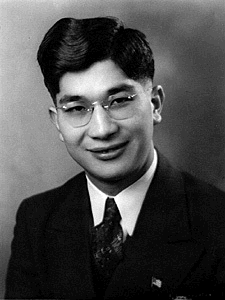 |
| Fifteen thousand members strong the JACL confronted a quandary about the manner in which it should proceed. The JACL did not want to appear disloyal to the nation at large. As an alternative to resistance, the JACL began to collaborate with the US government, causing many Japanese Americans to label the JACL as traitors. |
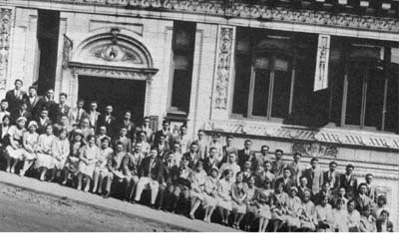
1930. The Japanese American Citizens League Convention which formally organized the group. JACL Hosowaka, pg 110 |
The
JACL policy of co-operation with the US government, which was
established before Pearl Harbor, bound the JACL to the role of intelligence informant.
The JACL co-operation in the formation of the Justice Department’s
‘ABC’ lists of suspected spies caused irreparable damage to the
reputation of the JACL among the rest of the Japanese American
community. Any means of resistance was futile because the leading
organization was collaborating with the oppressors. |
| Lieutenant Commander Kenneth D. Ringle, the Naval Intelligence Officer investigating Japanese loyalty, depended on the information provided by the JACL. |
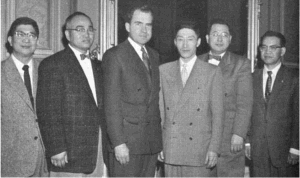
Hosokawa, Nisei, pg.480 JACL Leaders and President Nixon 153 |
Kido and Masaoka were not of the same mind about Japanese internment. Kido condemned it as a violation of ‘fundamental rights’ and claimed “the day is coming when those who are responsible for these outrageous violations of our rights will be ashamed of their conduct”. Masaoka said to the Tolan Congressional Committee “we will be glad to move, because we recognize that even behind the evacuation there is not just national security but also a thought as to our own welfare and security because we may be subject to mob violence and otherwise if we are permitted to remain.” |